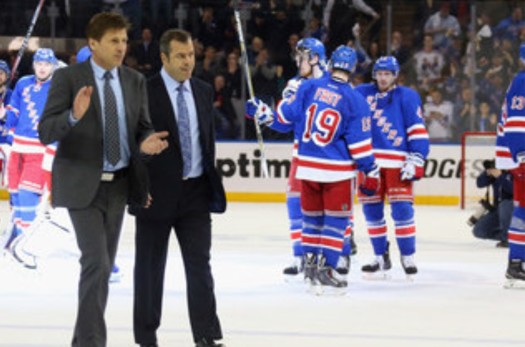
Penguins – Rangers X’s & O’s
The Rangers superior play 5 v 5 is the story going into Game 3 and how can’t it be when we live in such a crazed advance stats world now when it comes to analyzing NHL teams and you have the second best possession team (Pittsburgh) vs the 26th ranked possession team (New York) from the regular season.
The Rangers 5 v 5 have a Shot Attempts For percentage of 57% (98 shot attempts), Pittsburgh a meager 43%.
Scoring chances, the Rangers are +16 through two games, with a 50-34 advantage.
Despite the Rangers poor possession numbers during the regular season, as stated before the series, what gets overlooked with them is their even strength goal production.
They were tied for first in the NHL in even strength goals, also led the NHL last season, and have out-scored the Penguins 5-2 during 5-on-5 play through two games.
The Rangers 5 v 5 are out-playing the Penguins by winning the critical areas that made the Penguins so dominant over the final month of the season.
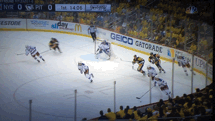
New York not Pittsburgh has been the team creating more odd-man rushes (Penguins got caught with three men deep in the offensive zone several times in Game 2) and the team winning the neutral zone.
The Penguins’ ability to beat the first wave of the forecheck has been a major strength and the backbone to their push-it forward attacking offensive system under Mike Sullivan.
It was a disaster for the Penguins’ in Game 2 and it’s played a part in the Penguins poor possession numbers through two games. They are exiting the zone more like the team from the first three months of the season than the team from the final two months of the season.
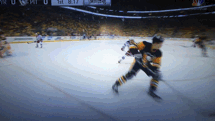
Olli Maatta’s struggles are a major problem for the Penguins’ if he’s going to continue to play a top pairing role (some signs in today’s practice he may be scratched for Game 3) and Trevor Daley is showing some cracks defensively like he showed in Chicago this season. Daley has been on the ice for all 5 even strength goals against.
Mike Sullivan has talked in the past couple days that he wanted a penalty kill presence with his d-pairs for Game 2.
That certainly has Ben Lovejoy now playing ahead of Justin Schultz and it should be noted Schultz’ poor d-zone play has made it an easier decision.
However, the Penguins lose a lot in their transition game with Schultz out and Lovejoy in. With Derrick Pouliot still in exile, you have a coaching staff like so many others that have gone with the safer defenseman.
We’ll see if that stance changes with the Penguins’ struggles to exit the zone.
VIGNEAULT, RANGERS MAKE KEY ADJUSTMENT IN SLOWING PENGUINS’ DOWN THROUGH NEUTRAL ZONE
What makes the NHL playoffs so fascinating and why the playoffs are a different ball game than the regular season is the adjustments that are made or not made on a game-to-game basis.
Coming in, this was a series that was all about what adjustments if any the Rangers would make from the previous meetings, the critical area being the neutral zone. For Pittsburgh, there was no need to change. Trust the process and they would succeed had been the feeling from many about this club prior to Game 1.
The script has now been flipped.
The Rangers have figured out how to defend the Penguins’ through the neutral zone with great success and the Penguins’ are a team whose success is pivotal to how they play through the neutral zone, notably playing with speed.
The Rangers ran what was a 2-3 neutral zone trap that was sometimes disguised as a 1-1-3 with the F2 sitting back than aggressively stepping up.
The F2 often took away the Penguins cross-ice long pass that is almost always their first option.
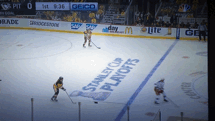
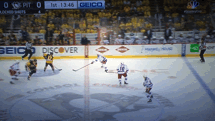
One systematic change Alain Vigneault and his staff made was implementing a wave of three players back.
When the Penguins were getting zone entries it was often 1-on-3 or even 1-on-4 at times. And what you saw was a lot of players away from the puck standing still.

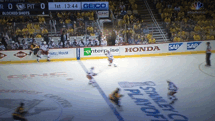
This wave of three players back, a tactic the Bruins used against Pittsburgh in 2013 playoffs, also limited the Penguins being able to turn puck battles into foot races, something they were able to exploit for the opening goal in Game 1 and burn a lot of teams over the last six weeks.
In Game 2, a 1-on-1 battle for the puck was turning into a 1-on-3 battle far too often.
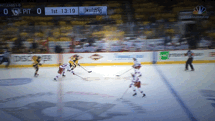
A team built on gaining the offensive zone with speed and numbers, New York finding the scheme to slow the Penguins’ attack down through the middle of the ice, from the puck carrier to players away from the puck, [hide] has now forced the Penguins’ hand where adjustments to combat what the Rangers are doing has to be made.
What the Penguins love to do is get teams going side to side and sending a player full steam ahead.
The first step for the Penguins to getting back to dominating through the neutral zone is beating the first wave of the Rangers forecheck. New York’s been able to force a poor first pass from the Pens ‘D’ which gives the ability to sit back and get into their neutral zone setup.
The Penguins are not catching them with two or three forwards deep. That must change, especially with Lundqvist back in net.[/hide]
